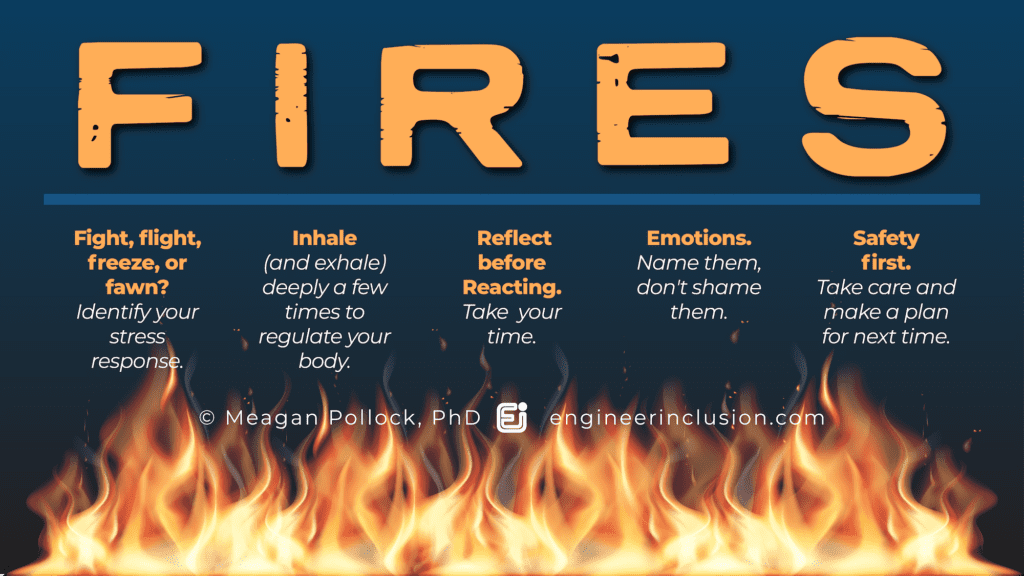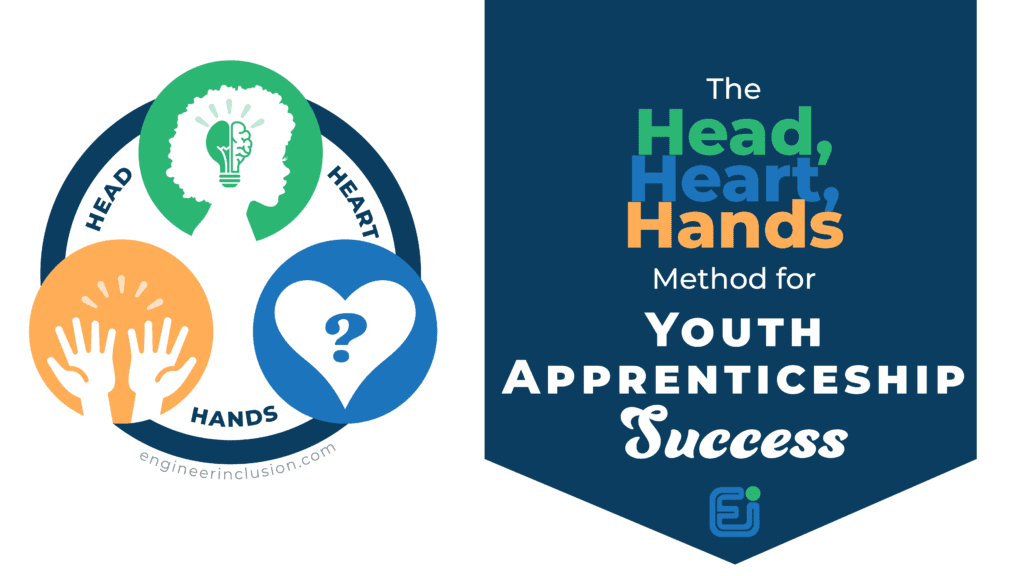FIRE! You must escape, but have you previously considered your exits and practiced how to get to safety? In this post, I use a metaphor of a fire escape plan to help us navigate challenging relationships and situations without getting so burned. Helpful acrostics enable you and others to put the strategies into practice.
I love a plan. One of my favorite quotes, since I was a freshman in high school, is by Margaret Thatcher, “Plan your work for today and every day, then work your plan.” My old powerlifting coach introduced it to me in an abbreviated form; he said: “Make a plan and work the plan.”
I make plans for all sorts of things. I am known to practice mentally and physically lots of things before I do them when it counts, whether that is a negotiation, a tough conversation, a big talk, or a powerlifting championship (I’m retired since 2015, though).
A month or so ago, I was whittling down the tasks to become licensed to adopt a child out of the foster care system in Texas, and one required task was to create a fire escape plan for my home, with at least two exits for each room, and post it visibly.
But in mapping exits and imagining fire drills with my future adopted children, I wondered:
- What hazards do I come across in life?
- Do I have a practiced plan for escape?
I make plans and practice for all sorts of things, but what about the daily non-flaming fires I face?
What are the fires you face?
When I think of fires in this metaphor, I think of things or people outside your control that appear in the way of optimal and safe egress. The types of external fires we face in life can be any number of things: systemic barriers upheld by people, microaggressive bosses, sociopaths (4% of the population!), jealous siblings, gatekeepers, and the list could go on.
The fires harm us.
They cause us discomfort, and elevated stress, flood our bodies with harmful loads of cortisol, jam our cognitive bandwidths, which reduce executive function, and often force us into a fight, flight, freeze, or fawn state.
The fires can also cause delays in accomplishing our goals and sometimes set us back in substantial ways.
REFLECT
Think about a time when you've encountered a "fire" that elicited a stress response. What happened? How did you react? Did you have to find an alternate path or route around them? Or did you stick around and get burned?
Are you getting burned?
The colloquial definition of insanity is doing the same thing over and over and expecting different results.
How often are we constantly bumping into the same fires, again and again, expecting things to be different? With optimism, hope, loyalty, commitment, determination, and perhaps naivety, we may find ourselves in toxic relationships with people and places burning us alive. And we let it.
It might be a damaged sibling relationship, a colleague who seems to be out to get you, or a boss who micromanages you. At every turn, you seem to bump into their familiar fire.
Depending on our level of power or influence over the situation, our options are to prevent it, watch it, extinguish it, or escape it.
- Prevent
- Watch
- Extinguish
- Escape
When we are talking about workplace culture, as leaders, we are responsible for preventing and extinguishing fires so that our valued team members don’t feel the need to escape. Sometimes the fire traumatizes you, too. However, you must prioritize yourself. You know, put the oxygen mask on yourself first, kind of situation. We can’t help others unless we have an activated strategy to help us survive the fire.
REFLECT
Reflect on a relationship or situation that has burned you multiple times. Why do you think this keeps happening? How is this affecting you?
Are others getting burned?
Sometimes privilege and an underdeveloped social consciousness prevent us from seeing the fires others are facing, but just because we don’t see them or experience them doesn’t mean they don’t exist.
I love the comic by Nathan W. Pyle that depicts two birds sitting in easy chairs, one reading the paper, another sipping a steaming hot beverage. One bird asks the other, “Do you think the owl is a predator?” The other bird responds, “Of course not. He’s never bothered me.” Content with the answer, the prompting bird says, “Exactly.” Moments later, he retorts, “No idea what Mr. Mouse was going on about.”
Empathetic listening is to be respectful of the dignity of others. Empathetic listening is caring, a love of the wisdom to be found in others, whoever they may be.
Thomas Bruneau, PhD
What do you do?
Most of my work equips people with tools and strategies to make meaningful changes within their sphere of influence. However, while I will share references to resources to help you prevent and extinguish fires others face, this post is primarily for people facing fires. Keep reading and you’ll find:
- ACTIONS TO PREVENT FIRES
- ACTIONS WHEN YOU FACE FIRES
- ACTIONS TO PREVENT BEING BURNED
Ultimately, I want to offer you an “oxygen mask” to help you prioritize yourself before you can determine the next steps.
Actions to Prevent Fires
(Click the links for resources and strategies.)
Actions When You Face Fires:
Like many of us learned as children to stop, drop, and roll if we are actually on fire, the trick to facing proverbial fires or barriers is to:
- STOP!
- DROP inside your body and mind to notice what you are feeling and experiencing
- ROLL out of the way of danger
FIRES is a helpful acronym to help you put on your oxygen mask first, per se. While this is a strategy to help you amid challenging situations, please remember that just because you are experiencing fires doesn’t mean you have done anything wrong. Oftentimes, the fires we experience in our relationships are more likely a reflection of the other person than of ourselves.
F: fight, flight, freeze, or fawn?
A good first step is to identify your stress response.
The National Institute of Mental Health defines stress as simply “the brain’s response to any demand.” Given that definition, not all stress is bad. It is simply a response. How harmful it ultimately depends on its intensity, duration and treatment.
The types of stress or trauma responses is residual of evolutionary demands for preservation. Understanding which response you are experiencing will help you know what to do next, but what’s most important for the first step is NOTICING what you are feeling.
I: Inhale and exhale deeply a few times to regulate your body.
There is a growing body of research that makes the case that altering our breathing can alter our brain. In 2017 Mark Krasnow of Stanford, Jack Feldman of the University of California, Los Angeles, and their colleagues identified a tight link between neurons responsible for controlling breathing and the region of the brain responsible for arousal and panic.
Andrew Huberman, a neuroscientist at Stanford University who studies the visual system, says, “stress is about how our eyes and breathing change in response to the world, as well as the cascades of events that follow.” Huberman found that we can actually turn off the stress response by changing the way that we are viewing our environment, regardless of what’s in that environment.
Both these bodily processes (vision and breathing) also offer us easy and accessible releases from stress. So, look out a window or look as far as you can to dilate your gaze while breathing deep breaths.
R: Reflect before reacting
After you recognize the response your body is in, reducing the stress response with deep breaths and some literal “perspective,” think and reflect before you react. Check out the stress response post for healthy ways to take action.
Whatever you need, however long you need, reflect before reacting so that you don’t escalate the issue, or do/say something you’ll regret later. You don’t want to add fuel to the fire!
I really like what Dr. Becky Kennedy teaches about learning to hold two truths. She writes in Good Inside (p15):
Understanding ("two things are true") and convincing ("one thing is true") are diametrically opposed ways of approaching other people, so a powerful first step in any interaction is to notice which mode you are in. When you're in "one thing is true" mode, you're judgemental of and reactive to someone else's experience, because it feels like an assault on your own truth. As a result, you will seek to prove your own point of view, which in turn makes the other person defensive, because they need to uphold the realness of their experience. In "one thing is true" mode, exchanges escalate quickly - each person thinks they're arguing about the content of the conversation, when in fact they're trying to defend that they are a real, worthy person with a real, truthful experience. By contrast, when we're in "two things are true" mode, we are curious about and accepting of someone else's experience, and it feels like an opportunity to get to know someone better. We approach others with openness and so they put down their defenses. Both parties feel seen and heard, and we have an opportunity to deepen connection.
Dr. Becky Kennedy
E: Emotions
Name them, don’t shame them! Knowing what you are feeling is helpful in tackling the often cascading emotions. I love Dr. Brené Brown’s book Atlas of the Heart. It gives rich descriptions of 87 emotions! If you feel mad, sad, angry, or confused, name that emotion and don’t shame yourself for feeling whatever you are feeling. In case you need a reminder, it is okay to have feelings and emotions.
S: Safety First
Are you okay? Do you need help? Where can you get the help you need? Find a trusted person, if possible, to help you navigate and process what has happened to you.
Do you need an escape plan? What can you do to not get burned again? The following section will help you design an escape plan to prevent getting burned again.
Actions to Prevent Being Burned
In this metaphor, we can’t often prevent fires, but we can take some preventative steps to reduce the risk of being burned by making a “fire escape” plan.
E: Evaluate your options
Assess the multiple exits possible for you. Like in a real fire, you may need to bust out a window or climb down a higher-floor ladder. You may need to be creative in how you plan to escape fires.
- How will you navigate if you have a micromanaging boss, an office bully, or an inequitable policy that blocks your way?
- How do you craft a path of least resistance toward your goals?
S: Secure support and allies
Fierce independence is a trauma response, so recognize that you do not need to go this alone.
- Who are the people and structures that will help you navigate challenging environments?
- How will you ask them to support you when “fires” flare up?
- How will you help others see the fires so they can help, if it is within their power, to reduce their frequency?
A: Adopt and Adapt an Action Plan
Adopt and adapt an action plan with options, allies, and considerations in mind. If it helps, map it out just like you might do with a fire escape plan, or at least list your strategies.
- When X happens, I will do Y.
P: Practice your Plan
Practice using your alternative paths so that when you face fire and your body enters a stress response, you have the cognitive capacity to do what you need to do.
- Explore the learning process and barriers to learning here.
E: Evaluate the results
After you practice, evaluate and assess how it worked.
- Was it an optimal, efficient, and safe solution?
- Did you make it too hard?
- What could you do differently that would feel and work better the next time?
REFLECT & SHARE
How can you help yourself and others employ the FIRES + ESCAPE tools? What additional thoughts and ideas do you have?
















